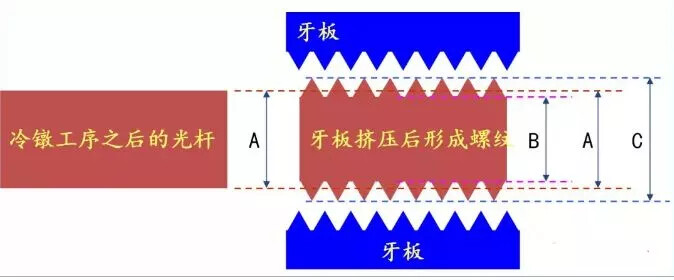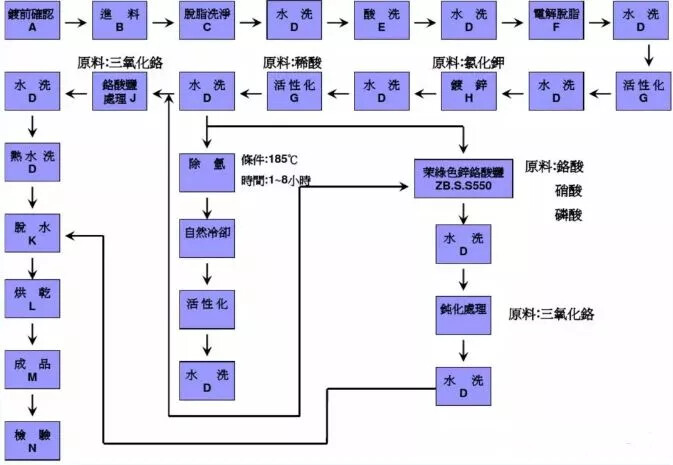- Distinctions Between Screws, Nuts, Bolts, Screws, and Studs:
- The standard terminology does not include “screw” and “nut.” “Screw” is a colloquial term, and any fastener with external threads can be referred to as a “screw.” A nut typically has a hexagonal shape with internal threads, used to tighten components in conjunction with a bolt. “Nut” is the correct term, while “cap” is a colloquial expression.
- A bolt usually has a hexagonal head and a rod with external threads. Screws are smaller, with heads that can be flat, Phillips, etc., and have external threads on the rod. A stud, technically known as a “double-ended stud,” has external threads on both ends with a smooth section in the middle. The longer threaded end connects to a deep hole, while the shorter end connects to a nut.
- Common English Terms:
- Screw / Bolt / Fastener (Screws) (Bolts) (Fasteners)
- Definition of Threads:
- Threads are uniform helical projections on the external or internal surface of a solid.
Functions of Screws
- Fastening and Connecting: Applicable to most screw products in current use.
- Transmission Function (Displacement Function): For instance, micrometers used for QC inspections.
- Sealing Function: Such as sealing pipe connections.
Development History of Threads
-
Machine Threads: When assembling, a hole is drilled and tapped in the assembly item, matching the internal threads with the external threads of the screw, allowing for assembly with lower torque.
-
Self-Tapping Threads: A hole is drilled in the assembly item without the need for internal threads, using higher torque for assembly.
-
Self-Drilling Threads: Used directly on the assembly item, the screw drills and taps in one step.
Processing Methods for Screws
- Turning:
- Removes material to achieve the desired shape.
- Advantages: High precision, no mold restrictions.
- Disadvantages: High production costs, slower processing speed.
- Forging:
- Deforms material under external pressure to achieve the desired shape.
- Advantages: Fast production speed, low cost, suitable for mass production.
- Disadvantages: Forming is limited by molds, and complex molds can be costly.
- Cold Heading:
- A process where metal wire is deformed using molds under no heat, a type of forging.
Basic Screw Configuration
To understand screws and bolts, one must know their types, features, and functions:
- A: Drive System
- B: Head
- C: Thread Profile Junction
- D: Lead-in and Threading Section
Types of Screws
-
Mechanical Thread Screws
-
Self-Tapping Screws
-
Triangular Thread Screws
Screw Head Types and Thread Profiles
Process Flow for Screws
The general process flowchart is as follows:
- Raw Material Process:
- Refers to the original coils purchased from the manufacturer, including parameters like brand, name, specification, material, furnace or batch number, and quantity or weight. Major chemical components of carbon steel coils include C, Mn, P, S, Si, Cu, Al, with lower contents of Cu and Al being preferable.
- Drawing Process:
- Achieves the desired wire diameter (e.g., drawing to 3.5mm).
- Cold Heading Process:
-
Forms the screw blank through the interaction of molds, cutting the wire to shape the head, cross slot (or other head types), thread blank diameter, and rod length, including the radius under the head.
-
Note: Designs can be customized based on customer requirements. Common head types include P-head, B-head, F-head, T-head, with common slots being Phillips, slotted, and hex.
- Thread Rolling Process:
- Forms threads on the cold-headed blanks through the interaction of movable and fixed thread plates.
- Heat Treatment Process:
-
Purpose: To achieve higher hardness and strength after cold heading.
-
Function: Enhances the self-tapping characteristics of metal, improving mechanical properties like torsion, tensile strength, and wear resistance.
-
Types:
-
Annealing (700°C x 4hr): Alters the structure to obtain a regular polygon shape.
-
Carburizing Heat Treatment: Adds carbon to improve surface hardness, especially for low carbon content metals.
-
Quenching and Tempering: Changes internal structures through temperature variation to achieve better mechanical performance.
-
- Electroplating Process:
- The finished product surface can exhibit desired color effects and anti-oxidation coatings.
























